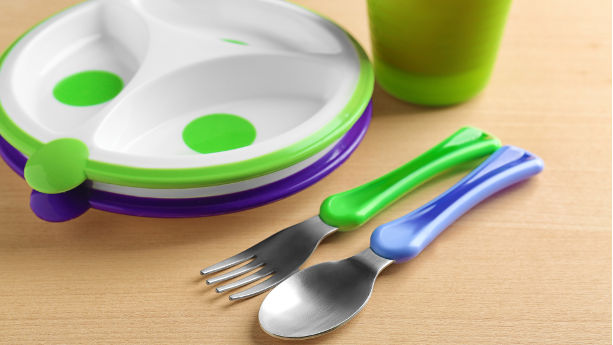Children’s products, cosmetics, food contact materials, and many other consumer products are subject to heavy metal restrictions. Examples of restricted heavy metals include lead, cadmium, and mercury.
In this article, we cover several regulations that restrict or ban heavy metals, including the CPSIA, the FHSA, and the TSCA.
Content Overview

FREE CONSULTATION CALL (30 MIN)
 Ask questions about compliance requirements
Ask questions about compliance requirements Countries/markets:
Countries/markets:
 Learn how we can help your business
Learn how we can help your business
You will speak with:Ivan Malloci or John Vinod Khiatani
What are heavy metals?
Heavy metals are defined as relatively high-density, naturally occurring, metals that might negatively impact the human body, even in low concentrations. The carcinogenicity of the heavy metals might depend on factors such as the individual’s age, the substance’s dose, and the route of exposure.
There are many products that might contain heavy metals. Here we list a few of those:
- Cosmetics
- Electrical and electronic products
- Food contact products
- Toys
- Medical devices
These kinds of products may contain common heavy metals, such as the following:
- Arsenic
- Chromium
- Lead
- Mercury
- Nickel

Are heavy metals banned in the United States?
The United States does not outright prohibit most heavy metals. It does, however, restrict many of them to levels low enough for the product to be deemed safe.
Further, some heavy metals are regulated in US states.
US Regulations
Here are some examples of regulations that restrict the usage of heavy metals in consumer products:
- California Proposition 65
- CPSIA
- FHSA
- RoHS
As an example, 16 CFR Part 1303 under CPSIA restricts the levels of lead in consumer products such as:
- Paint and similar surface coating materials
- Children’s products
- Furniture
Examples
Exposure to heavy metals might cause significant harm to human health and the environment. Below, we list a few common heavy metals and some examples of their negative effects on the human body.
Cadmium – Liver damage, degenerative bone disease.
Chromium – Kidney dysfunction, lung cancer.
Lead – Cardiovascular dysfunction, injury to the central nervous system.
Mercury – Gastrointestinal ulceration, renal dysfunction.
Arsenic – Cognitive dysfunction, obstructive pulmonary diseases.
16 CFR Part 1303 – Ban of lead-containing paint and certain consumer products bearing lead-containing paint
16 CFR Part 1303 prohibits the use of paint, and similar surface-coating materials in consumer products, if they contain lead in excess of 0.009% (90 parts per million, ppm) of the weight in:
- The total non-volatile paint content; or
- The dried paint film
It also prohibits the use of lead-containing paint on:
- Children’s products
- Furniture
Exemptions
Some products are exempt from the lead content restrictions so long as they carry indicative warnings specifying that they contain lead. This includes the following products:
a. Agricultural equipment refinish coatings.
b. Building maintenance coatings.
c. Lawn and garden equipment.
Some other products are exempt and do not require cautionary labeling. We list some examples below.
a. Artist paints
b. Metal furniture (aside from children’s furniture) with factory-applied lead coating
c. Mirrors that are part of furniture products with lead-containing backing paint
Test methods
As said, 16 CFR Part 1303 restricts the amount of lead in different categories of products. Importers and manufacturers should have their products tested for lead content using one of the following test methods:
a. CPSC-CH-E1003-09.1 – Standard Operating Procedure for Determining Lead (Pb) in Paint and Other Similar Surface Coatings.
b. ASTM F2853-10 – Standard Test Method for Determination of Lead in Paint Layers and Similar Coatings or in Substrates and Homogenous Materials by Energy Dispersive X-Ray Fluorescence Spectrometry Using Multiple Monochromatic Excitation Beams.
16 CFR Part 1500.87 – Children’s products containing lead: inaccessible component parts
16 CFR Part 1500.87 restricts lead in children’s products to 0.1% by weight (100 ppm). The restriction does not apply to inaccessible component parts of the products.
Component parts are inaccessible if:
a. The parts are not physically exposed because of a casing or sealed covering; and
b. Those parts do not become physically exposed as a result of expected use and abuse of the product.
Exceptions
There are special provisions for metal components of bicycles, which are allowed to contain a maximum of 300 ppm of lead. Such components include those made with:
- Steel containing up to 0.35% lead
- Aluminum containing up to 0.4% lead
- Copper containing up to 4.0% lead
Further, the lead restrictions do not apply to off-highway vehicles. Note that additional exceptions might exist.
Test methods
According to this guidance document, importers and manufacturers should have their products tested for lead content using the following test methods:
a. CPSC-CH-E1001-08.3 – Standard Operating Procedure for Determining Total Lead (Pb) in Children’s Metal Products.
b. Test Method: CPSC-CH-E1002-08.3 – Standard Operating Procedure for Determining Total Lead (Pb) in Nonmetal Children’s Products.
CPSIA: Children’s Products
The CPSIA regulates children’s products, meaning products meant for use by children aged 12 and younger. It covers substance restrictions (e.g., phthalates), labeling requirements (e.g., tracking labels), documentation (e.g., CPC), and testing.
Product scope
Here are a few examples of children’s products covered by CPSIA that might contain heavy metals:
- Bassinets
- Frame child carriers
- Pacifiers
- Toy magnets
Substance restrictions
Both 16 CFR Parts 1303 and 1500.87 apply to lead presence in children’s products under the CPSIA. However, the CPSIA may also restrict other substances, including heavy metals, in different children’s products.
ASTM standards
The CPSIA might incorporate ASTM standards that may, in turn, restrict heavy metals. For instance, the following standard is incorporated by reference, and as such, are mandatory:
a. ASTM F963 – Standard Consumer Safety Specification for Toy Safety.
Some ASTM standards are voluntary; but if there are no mandatory standards for a given product, importers and manufacturers can still use voluntary standards to assess the safety of their products. Here is an example for children’s jewelry:
a. ASTM F2923 – Standard Specification for Consumer Product Safety for Children’s Jewelry.
Requirements
The CPSIA mandates that importers and manufacturers of children’s products must comply with labeling and documentation requirements such as the following:
- Children’s Product Certificate (CPC)
- Tracking label
- Test reports
- Warning label (if relevant)
FHSA: Household Products
The Federal Hazardous Substances Act (FHSA) sets restrictions and labeling requirements for hazardous substances and products that might contain these substances. This helps consumers properly store and use those substances and products, as well as administer immediate first aid when necessary.
Substance restrictions
The FHSA limits lead use in a variety of products. Here, we provide some examples:
a. 16 CFR Part 1500.87 restricts the lead limit in paint and some consumer products to 0.1% by weight.
b. 16 CFR Part 1500.17 restricts the lead limit in candles made with metal-cored wicks, as well as metal-cored candlewicks, to 0.06% by weight.
Note that the FHSA might also restrict other heavy metals.
Food, Drug, and Cosmetic Act
The Food and Drug Administration (FDA) enacted the Federal Food, Drug, and Cosmetic Act, which is codified under Title 21 of the CFR. The act regulates products such as the following:
- Cosmetics
- Food
- Food contact materials
- Medical devices
Food Contact Materials
The FDA published some policies that limit the use of some heavy metals in tableware by setting maximum leaching levels. Here are a few of those policies:
a. CPG Sec. 545.400 Pottery (Ceramics); Import and Domestic – Cadmium Contamination.
b. CPG Sec. 545.450 Pottery (Ceramics); Import and Domestic – Lead Contamination.
c. CPG Sec. 545.500 Silver-Plated Hollowware – Lead Contamination.
Substance restrictions
The above policies set guidelines for the leaching levels of cadmium and lead in ceramic pottery and silver-plated hollowware.
We list the various types of ceramic pottery and silver-plated hollowware below, as well as their maximum leaching allowed limits:
Ceramic pottery
- Flatware – 0.5 mg/ml of cadmium, 3.0 mg/ml of lead
- Small hollowware – 0.5 mg/ml of cadmium
- Small hollowware other than cups and mugs – 2.0 mg/ml of lead
- Cups and mugs – 0.5 mg/ml of lead
- Large hollowware – 0.25 mg/ml of cadmium
- Large hollowware other than pitchers – 1.0 mg/ml of lead
- Pitchers – 0.5 mg/ml of lead
Silver-plated hollowware
- Hollowware meant for use by adults – 7.0 mg/ml or more of lead
- Hollowware meant for exclusive use by infants and children – 0.5 mg/ml or more of lead
Exceptions
Note that exceptions might apply. For example, products are not subject to CPG Sec. 545.500 if:
a. They are made unsuitable to hold liquids because they have holes; or
b. They carry a permanent “not for food use” label and a statement outlining a possible hazard associated with the product if consumers use it for food purposes.
Additional restrictions
Additional heavy metal restrictions might exist for different food contact materials imported or manufactured in the United States.
Food Additives
21 CFR Part 172 regulates the use of some heavy metals in food additives permitted for direct addition to food for human consumption. In the table below, we list a few examples of food additives and some of their maximum permitted limits.
| Food additive | Heavy metals and maximum permitted limits |
| Anoxomer | Lead < 10 ppm
Arsenic < 3 ppm Mercury < 1 ppm |
| Natamycin (pimaricin) | Arsenic < 1 ppm
Lead < 20 ppm |
| Epoxidized soybean oil | Lead < 10 ppm |
| Curdlan | Lead < 0.5 mg/kg
Heavy metals as lead < 0.002% |
| Sucrose fatty acid esters | Arsenic < 3 ppm
Total heavy metal content as lead < 50 ppm |
The FDA also restricts lead levels in bottled water to 5 parts per billion (ppb), and prohibits the use of lead in can solder for packaged food.
Other heavy metal restrictions may exist for other foods, such as:
- Foods meant for infants and young children
- Juice and candy
Cosmetics
The FDA sets limits on the usage of heavy metals in cosmetics. This includes the following restrictions:
Mercury – Maximum of 65 ppm as a preservative in eye area products, and maximum 1 ppm as a trace amount in other cosmetic products.
Lead – Maximum of 10 ppm as an impurity in products such as lip gloss and eye shadows, and a maximum of 20 ppm in color additives in cosmetics.
Arsenic – Maximum of 3 ppm in color additives in cosmetics.
Chromium – Maximum of 50 ppm as an impurity in the color additive “FD&C Blue No. 1”.
Toxic Substances Control Act (TSCA)
The Toxic Substances Control Act (TSCA) regulates the production, importation, use, and disposal of specific substances in the United States, including articles that contain these substances. It authorizes the EPA to require importers and manufacturers to report on the importation, production, intentional usage, and disposal of some chemicals, such as mercury.
Reporting requirements
The reporting requirements also apply to importers and manufacturers of several products containing mercury.
For instance, importers and manufacturers of some mercury-added products need to report to the EPA. We list a few such products below:
- Silver oxide batteries
- Metal halide lamps
- Fever thermometers
- Thermostats
- Firearm recoil suppressors
Mercury-Containing and Rechargeable Battery Management Act
This act aims to phase out and prohibit the usage of mercury in batteries, as well as aid in the proper cost-effective and efficient collection and disposal or recycling of various types of batteries.
Title I – Rechargeable Battery Recycling Act
This Act aims to facilitate the proper disposal or recycling of batteries such as:
- Used nickel-cadmium rechargeable batteries
- Used small sealed lead-acid rechargeable
It prohibits importers and manufacturers from selling or distributing rechargeable batteries or products if:
a. Those products do not carry the right labeling.
b. The regulated batteries are easily removed from the rechargeable product.
c. The regulated batteries are sold separately.
Title II – Mercury-Containing Battery Management Act
This Act prohibits the manufacture, import, sale, and distribution of the following batteries containing more than 25 milligrams of mercury per button cell:
- Alkaline-manganese batteries containing mercury
- Zinc-carbon batteries containing mercury
- Button cell mercuric-oxide batteries
- Other types of mercuric-oxide batteries
Heavy Metal State Regulations
Several states have enacted their own regulations for limiting the heavy metal contents on different products, such as electrical and electronic products, food contact products, and packaging.
RoHS
The Restriction of Hazardous Substances (RoHS) Directive was initially introduced in the European Union to regulate heavy metal content in electrical and electronic equipment.
Several states in the United States refer to the EU RoHS Directive as a blueprint and have developed their own legislation concerning heavy metals content and disposal methods of some electrical and electronic equipment. These states include:
- California
- Illinois
- Indiana
- Minnesota
- New Jersey
- New York
- Rhode Island
- Wisconsin
The specific requirements might change according to the state. Some states, such as California, prohibit the sale of electronic devices if they are banned in the EU for containing more than:
- 0.1% by weight of hexavalent chromium, lead, and mercury
- 0.01% by weight of cadmium
Other states, such as Indiana, only require manufacturers to register their electrical and electronic devices with the state if the heavy metals in those devices exceed acceptable levels.
Finally, some states only regulate some types of electronics. For instance, Illinois only regulates electronic devices such as DVD players, fax machines, and televisions.
Model Toxics in Packaging Legislation
The Toxics in Packaging Clearinghouse (TPCH) developed the Model Toxics in Packaging Legislation to restrict the use of four kinds of heavy metals in dyes, inks, pigments, stabilizers, and adhesives in product packaging. The legislation restricts the following heavy metals to a total of 100 mg/kg by weight:
- Lead
- Mercury
- Cadmium
- Hexavalent chromium
Nineteen states have developed their own regulations based on the model legislation, but they might have different requirements. We list those states below:
- California
- Connecticut
- Florida
- Georgia
- Illinois
- Iowa
- Maine
- Maryland
- Minnesota
- Missouri
- New Hampshire
- New Jersey
- New York
- Pennsylvania
- Rhode Island
- Vermont
- Virginia
- Washington
- Wisconsin
California Proposition 65
The California Office of Environmental Health Hazard Assessment (OEHHA) administers California Proposition 65, which regulates the usage of chemicals, including heavy metals, in consumer products.
The OEHHA annually updates a list of chemicals that are deemed to be carcinogenic and toxic for reproduction. Below are a few listed heavy metals and their No Significant Risk Level (NSRL) and Maximum Allowable Dose Level (MADL) limit values:
a. Arsenic – NSRL of 0.06 µg/day through inhalation, and NSRL of 10 µg/day (except inhalation).
b. Cadmium – MADL of 4.1 µg/day orally, and NSRL of 0.05 µg/day through inhalation.
c. Chromium – NSRL of 0.001 µg/day through inhalation, and MADL of 8.2 µg/day orally.
.
d. Lead – NSRL of 15 µg/day orally
The California Proposition 65 List also features other heavy metals but does not provide their NRSL or MADL values. This includes the following heavy metals:
- Antimony
- Mercury
- Nickel
- Vanadium
Other Regulations
Here, we list other state regulations that restrict certain kinds of heavy metals in consumer products:
a. Arkansas – SB 323 – Bans mercury switches from vehicles less than 12,000 lbs.
b. Connecticut – HB 5314 – Ban cadmium in children’s jewelry.
c. Illinois – HB 5040 – Bans cadmium in children’s jewelry.
d. Minnesota – SF 1262 – Bans lead in jewelry.
e. Rhode Island – H 7199 – Bans mercury-containing thermostats.
f. Hawaii – S 2402 – Bans mercury vapor lamps.
g. Michigan – HB 4399 – Bans lead in lunch boxes.
You can visit this website to find more regulations concerning heavy metal restrictions in various states in the United States.
























.png)
.png)
.png)



My understanding is that there is still in 2025, NO max level set by the FDA for any toxic metal in an aerosol cloud produced by a vape and sucked into the lungs by the user. The American Thoracic Society working group on vape safety has called for such, but, nothing has happened.
Very interesting articles.
I work for a consultant company in Italy with headquarter in Ny, ExportUSA New York Corp
https://www.exportusa.us/ .
I follow customers who export food.
That i understand from the article is that to find the permitted limits in food products in USA is 21 CFR172 the legislation to refer to, no other, is correct?
I have client with a dehydrated condiment for pasta and we want be in compliance.
Thanks